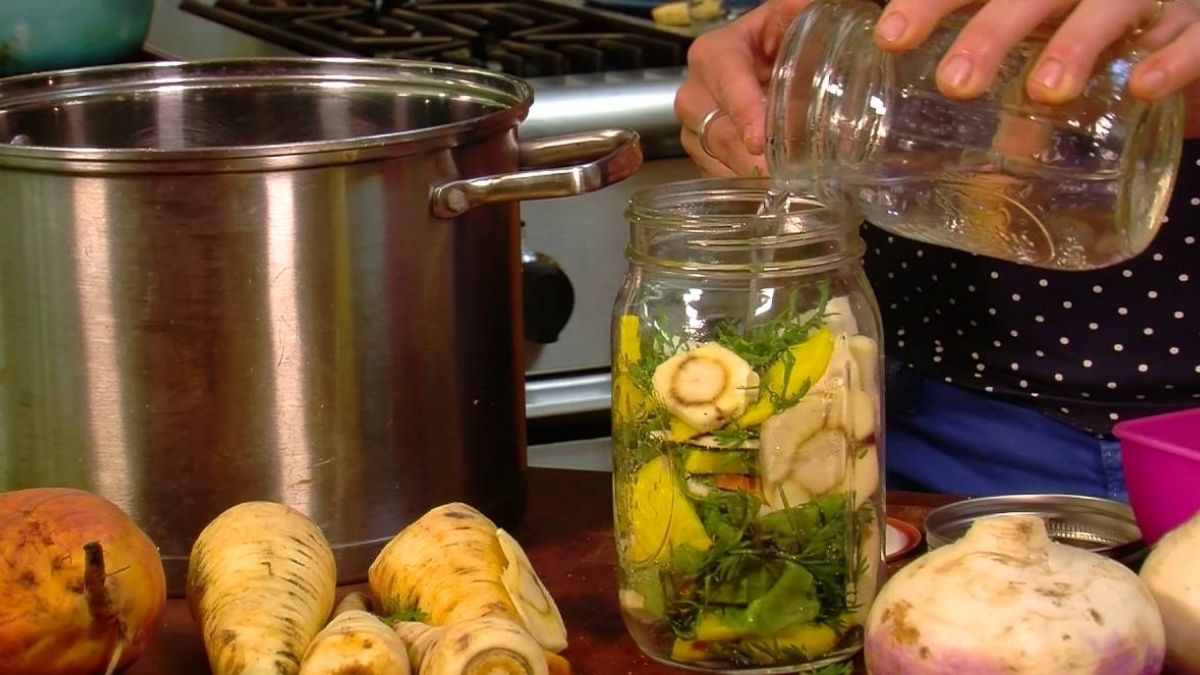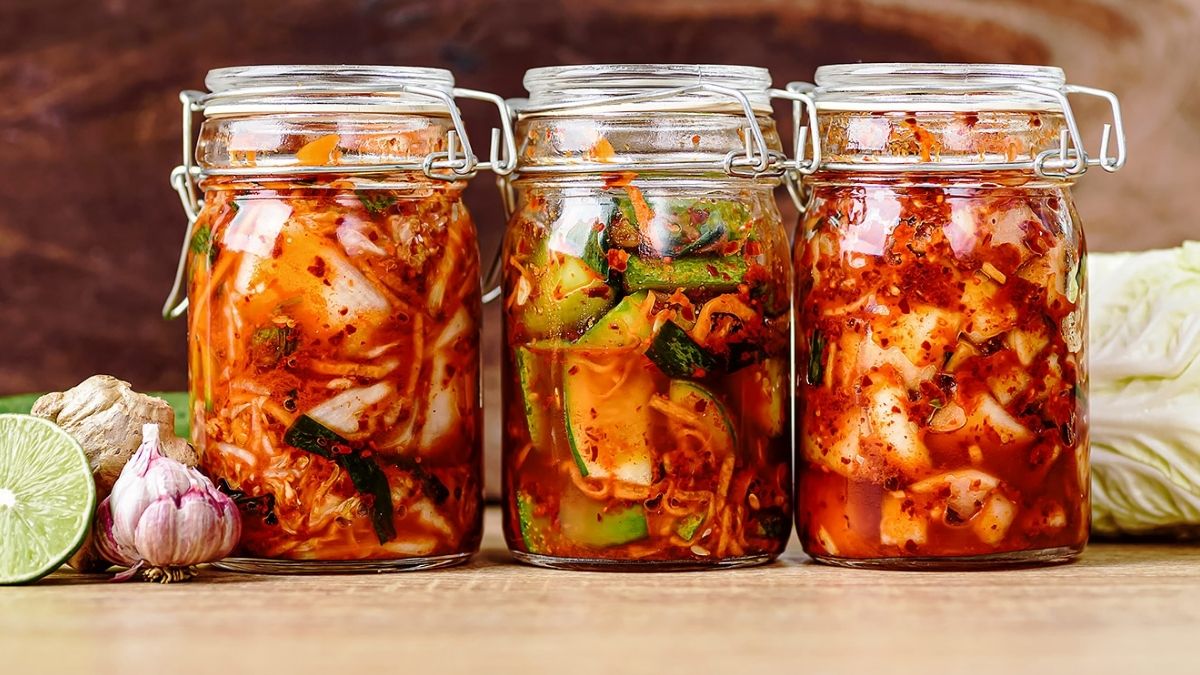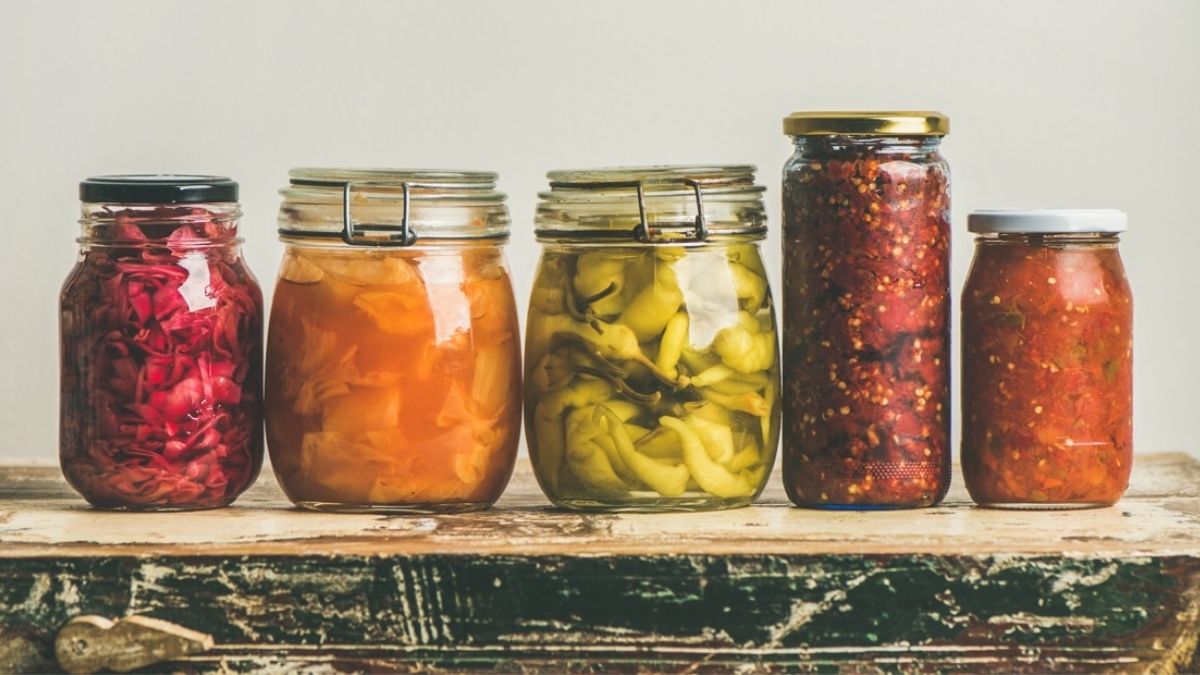You may be familiar with the phrase fermentation and believe it has something to do with brewing or bacteria. In truth, Fermentation is an essential step in producing foods, including bread, beer, wine, and cheese. Probiotics, or helpful bacteria that aid digestion, are also produced by some types of Fermentation. It’s important to note that Fermentation is not the same as pickling.
Humans had fermented food since the Neolithic period, long before anyone understood fermentation science. We now understand why Fermentation not only improves the taste of foods like sourdough bread, cheese, and wine but also serves to keep us alive, thanks to the scientific discoveries of French microbiologist Louis Pasteur, who demonstrated that living organisms initiate Fermentation.
What is Fermentation?
Fermentation is a metabolic process in which living organisms eat carbohydrates (such as starch or sugar) and make alcohol or acid. Yeasts, such as those used in bread baking and the production of beer and wine, produce alcohol, whereas bacteria, such as those found in yogurt, produce acid. Anaerobically breaking down molecules such as glucose is referred to as Fermentation. In a broader sense, Fermentation is the foaming that occurs during the production of wine and beer, a process that dates back at least 10,000 years.
Fermentation is any metabolic process in which the action of microorganisms causes the desired change in food and beverages, whether it’s to improve flavor, preserve foods, or provide health advantages. Ferment is derived from the Latin verb “fervere,” which means “to boil.” Fermentation is, ironically, achievable without the use of heat.
How does Fermentation Work?
Fermentation is complicated, yet all organisms require oxygen to transform glucose, a simple sugar, into energy that can be used by the organism’s cells. (The entire organism consists of a single cell in yeast and bacteria, but the process also occurs in more giant creatures such as humans and plants.)
Microorganisms such as yeasts and bacteria lack lungs; therefore, they extract oxygen from the atmosphere or the liquid environment in which they dwell (provided the liquid has oxygen, as water does), and life continues. But what if the atmosphere has little or no oxygen? In such a situation, these organisms must extract oxygen from the environment through a process known as Fermentation.
The Fermentation Process
Fermentation can be divided into ethyl alcohol fermentation and lactic acid fermentation.
Both entail organisms breaking down carbohydrates to get the oxygen that aids in the formation of each carbohydrate molecule. They produce waste products in the process, such as lactic acid in the case of bacteria and a mixture of ethyl alcohol and CO2 gas in the case of yeast.
During ethyl alcohol fermentation, yeast organisms devour sugar and produce ethyl alcohol, which gives beer, wine, and spirits their kick, and CO2, which helps bread rise.
Lactic acid fermentation is carried out by lactobacillus acidophilus bacteria found in yogurt. The bacteria take lactose, a sugar found in milk, and convert it to oxygen for themselves using lactic acid as a waste product. The tanginess of yogurt comes from this acid.
1. Lactic Acid Fermentation:
Lactic acid fermentation produces fermented foods such as kimchi and sauerkraut. It works by immersing foods such as cabbage in salty brine. Salt destroys bacteria that cause food spoiling, but lactobacillus bacteria, which are found almost everywhere, including cabbage and other foods, are unaffected. After soaking in the salty brine for a bit, the lactobacillus bacteria start to work, turning the carbohydrates in the veggies into lactic acid, which aids in preservation while also giving a sour flavor. Lactic acid fermentation is also used to make tofu, miso, soy sauce, ketchup, and pepperoni.
2. Ethyl Alcohol Fermentation:
Beer, wine, spirits, and bread are all products of ethanol alcohol fermentation. It’s worth noting that sourdough bread requires both ethyl alcohol and lactic acid fermentation. The lactobacillus gives the bread its sour flavor, while the yeast gives it its rise.
Primary and Secondary Fermentation are the two stages of Fermentation that beer and wine go through. The main stage causes quick alcohol production, but the second stage is slower and aids in developing more nuanced flavors.
3. Acetic Acid Fermentation:
Although it is probably a variant of ethyl alcohol fermentation, some people consider acetic acid fermentation a third type. It’s the procedure that turns wine into vinegar. Therefore, it’s not ideal if you want to make wine, but it’s ideal for making vinegar.
It works by specific bacteria known as acetic acid bacteria oxidizing alcohol and sugar to produce acetic acid, simply plain vinegar when severely diluted. This procedure is a secondary fermentation stage in kombucha production, following the initial stage of ethyl alcohol fermentation.
6 Tips for Starting Fermentation
- Establish your “starter” cultures. Although microbes are naturally present in the air you breathe, you’ll frequently need a “starting” culture, such as whey (from yogurt), a Symbiotic Colony of Bacteria and Yeast, or SCOBY (for kombucha), or even liquid from a previous fermentation to get started. Beneficial bacteria are already abundant in starter cultures, and they’ll increase quickly and kick-start the fermentation process when you add them to your food or beverage product.
- Keep your equipment clean. Cleaning and sterilizing your kitchen equipment and work surfaces is critical to preventing nasty germs from seeping onto your ferment.
- Avoid exposure. Allowing your ferment to contact air can inhibit proper Fermentation and raise the danger of spoiling and food poisoning. You may avoid this in some ways.
- To prevent fermenting food from coming into contact with air, you can submerge it in a salt solution (brine). This approach works great for fermenting solid foods like chopped vegetables. By adding vinegar to your solution, you may adjust the pH of the Fermentation, which controls how much oxygen will be present.
- Storage. Keep your fermenting product in a sealable storage container to avoid air contamination. Many home fermenters use a simple mason jar with a lid, but numerous options exist. Storage vessels usually incorporate a valve that allows carbon dioxide gas created during fermentation to escape. You can physically open sealed containers to release carbon dioxide if you’re devoted to closely monitoring your ferment, so it doesn’t spoil. (You can skip the CO2 venting if you’re creating kombucha, wine, or other goods that benefit from carbonation.)
- Fermentation management. You may influence the outcome of your Fermentation by altering the temperature of the surroundings. Microbes thrive in warm or room temperature environments, although the ideal temperature varies depending on the microbes you’re using and what you’re fermenting. Changing the temperature has a significant impact on your process. Moving your goods to a colder location, such as a cellar or a refrigerator, will reduce the fermentation rate and, in some cases, totally stop it. On the other hand, heating a ferment can kill your beneficial bacteria.
What are the Advantages of Fermentation?
Fermented foods are high in probiotics, which are good bacteria that assist the gut to stay healthy so it can absorb nutrients from meals.
- Because the gut produces antibiotics, anti-tumor, anti-viral, and antifungal chemicals, and pathogens don’t thrive in the acidic environment created by fermented foods, probiotics help the immune system.
- Fermentation also aids in the neutralization of anti-nutrients such as phytic acid, which can cause mineral shortages and is found in grains, nuts, seeds, and legumes. Neutralizing phytates are particularly advantageous because they make carbs, proteins, and lipids less digestible.
- Fermentation can boost the number of vitamins and minerals in food and make them more absorbable. Fermentation boosts B and C vitamins while improving folic acid, riboflavin, niacin, thiamin, and biotin levels. Fermented foods contain probiotics, enzymes, and lactic acid, which aid in absorbing vitamins and minerals.
Food fermentation has some advantages. It helps preserve food by inhibiting the growth of microorganisms that cause food spoiling through the alcohols or acids it creates. Cheese, sour cream, yogurt, sauerkraut, and kombucha are a few examples. Fermentation gives foods flavor, such as the tanginess of yogurt, the zing of kombucha, and the funkiness of traditional miso paste.
Fermentation also improves “gut health” by replacing the healthy bacteria in our intestines that promote digestion. Foods like yogurt and kombucha include live cultures of beneficial bacteria called probiotics.
While Fermentation is used to produce beer, wine, and bread, these items do not contain live microorganisms and give no “gut health” advantages.
Pickling vs. Fermenting
Fermentation and pickling are sometimes confused because both are methods of food preservation and generate sour foods. The distinction is that Lactobacillus acidophilus bacteria produce acetic acid during Fermentation, which gives the meal its sour flavor. Pickling involves immersing items in a solution containing vinegar, which lends a sour flavor to the food without fermenting it, and it merely needs to soak in vinegar.
What Happens During the Fermentation Process?
Fermentation occurs in the absence of oxygen (anaerobic conditions) and in the presence of helpful microorganisms that get their energy from Fermentation (yeasts, molds, and bacteria). Even when oxygen is plentiful, some yeast cells, such as Saccharomyces cerevisiae, prefer Fermentation to aerobic respiration if enough sugar is available.
- These helpful microorganisms break down sugars and starches into alcohols and acids during the fermentation process, making food more nutritious and preserving it so it may be stored for more extended periods without rotting.
- The enzymes required for digestion are found in fermentation products. This is significant since people have a finite amount of enzymes that decline with age, and fermented foods have the enzymes needed to digest them.
- Fermentation also aids pre-digestion. Microbes feed on sugars and starches during the fermentation process, breaking down food before being digested.
What are the 3 Different Types of Fermentation?
Microbes specializing in turning one component into another can create a wide range of foods and beverages. There are three different forms of Fermentation used by people.
Lactic Acid Fermentation
Yeast strains and bacteria convert starches or sugars into lactic acid without heat. Pyruvic acid employs nicotinamide adenine dinucleotide + hydrogen (NADH) to create lactic acid and NAD+ in these anaerobic chemical processes. (Lactic acid fermentation takes place in human muscle cells as well.) Muscles can expend adenosine triphosphate (ATP) quicker than oxygen can be delivered to muscle cells during intensive activity, resulting in lactic acid accumulation and aching muscles.
In this case, glycolysis produces ATP by breaking down a glucose molecule into two pyruvate molecules without using oxygen.) Lactic acid bacteria are essential for producing and preserving low-cost, nutritious meals, especially crucial for feeding disadvantaged people. Sauerkraut, pickles, kimchi, yogurt, and sourdough bread are all made using this approach.
Ethanol Fermentation/Alcohol Fermentation
Yeasts convert pyruvate molecules in starches or sugars to alcohol and carbon dioxide, resulting from glycolysis (C6H12O6) metabolism. Wine and beer are made through alcoholic Fermentation.
Acetic acid fermentation
Grain and fruit starches and sugars ferment to produce sour vinegar and sauces.
Conclusion
During this brief phase, microbes start working on raw nutrients, including fruit, vegetables, and dairy. Putrefying bacteria are prevented from colonizing the food by microbes present or surrounding fluids (such as brine for fermented vegetables). Yeasts and other bacteria convert carbohydrates (sugars) into alcohol and acids. Alcohol levels grow during this prolonged stage of Fermentation, which can take several days or even weeks, while yeasts and bacteria die off as their food source (carbohydrates) become limited.
Winemakers and brewers use secondary Fermentation to manufacture alcoholic beverages. The pH of the ferment might vary significantly from when it began, affecting the chemical reactions that occur between the microorganisms and their surroundings. Distillation is required to eliminate water and condense alcohol content to make a more significant percentage of alcohol once alcohol reaches 12–15 percent and kills the yeast, limiting further Fermentation (proof).


